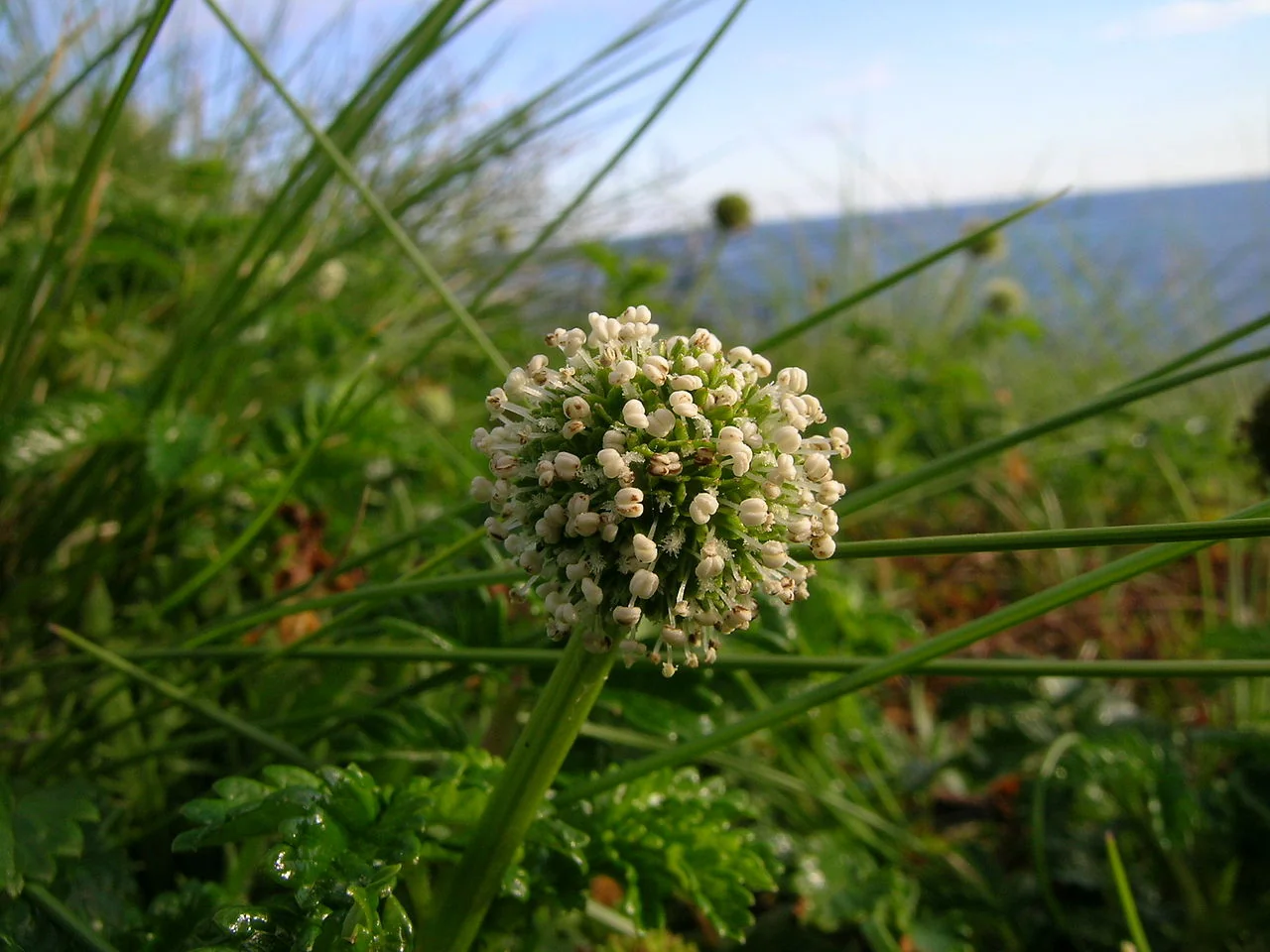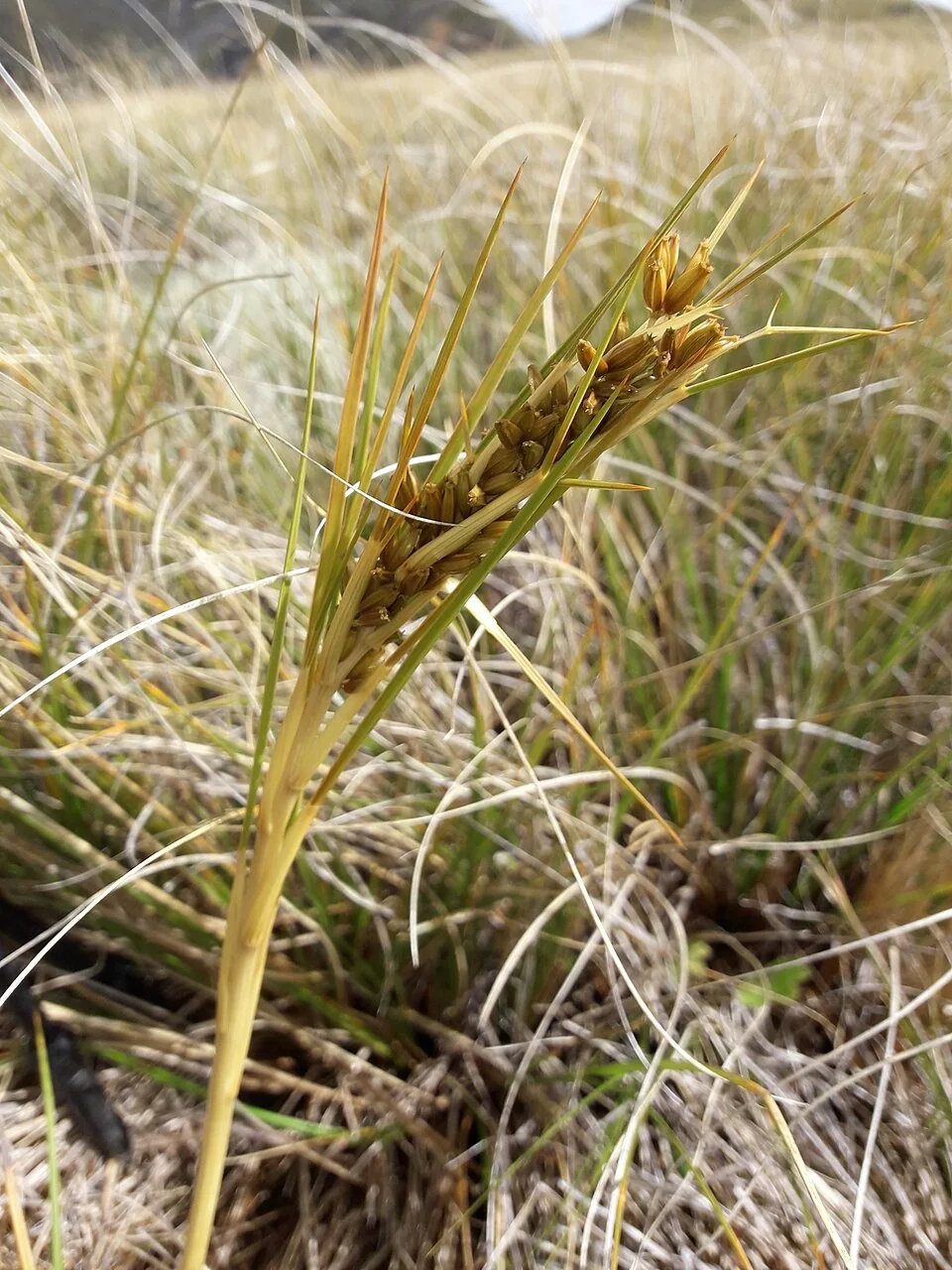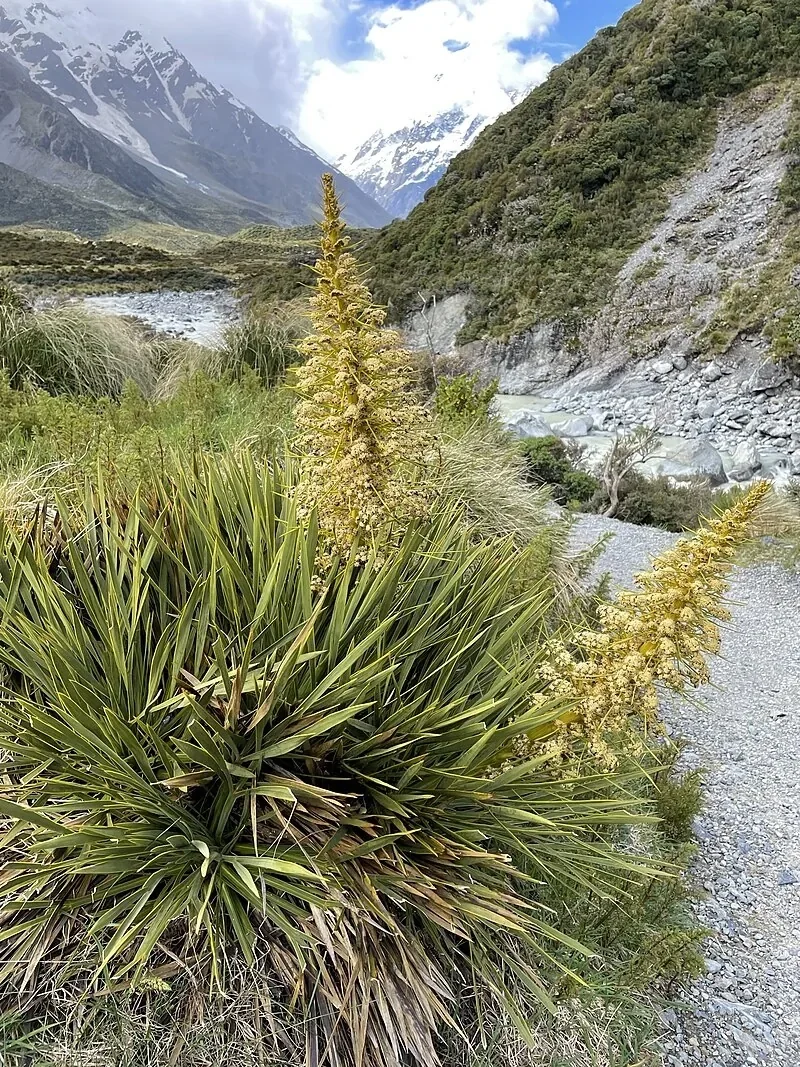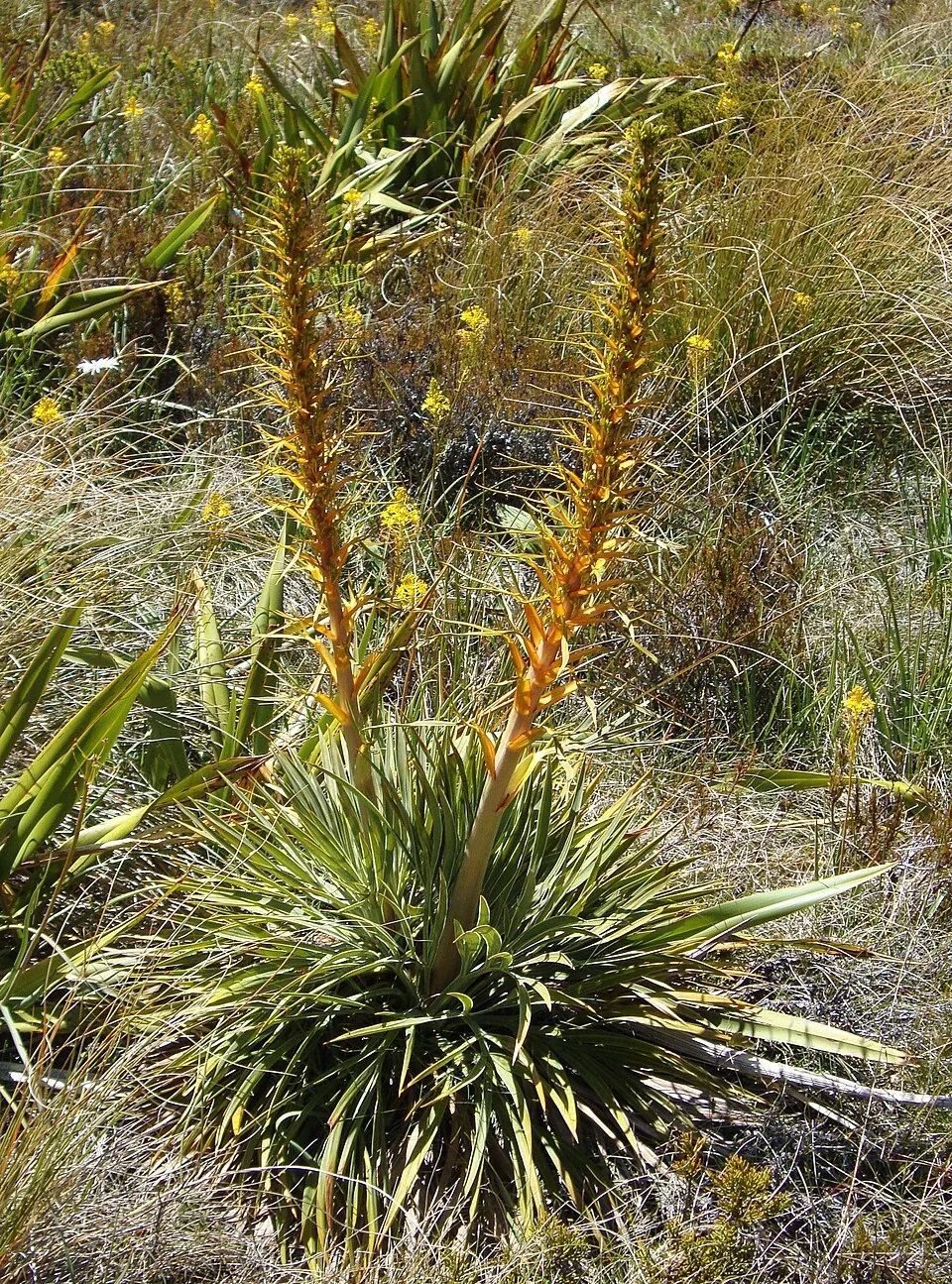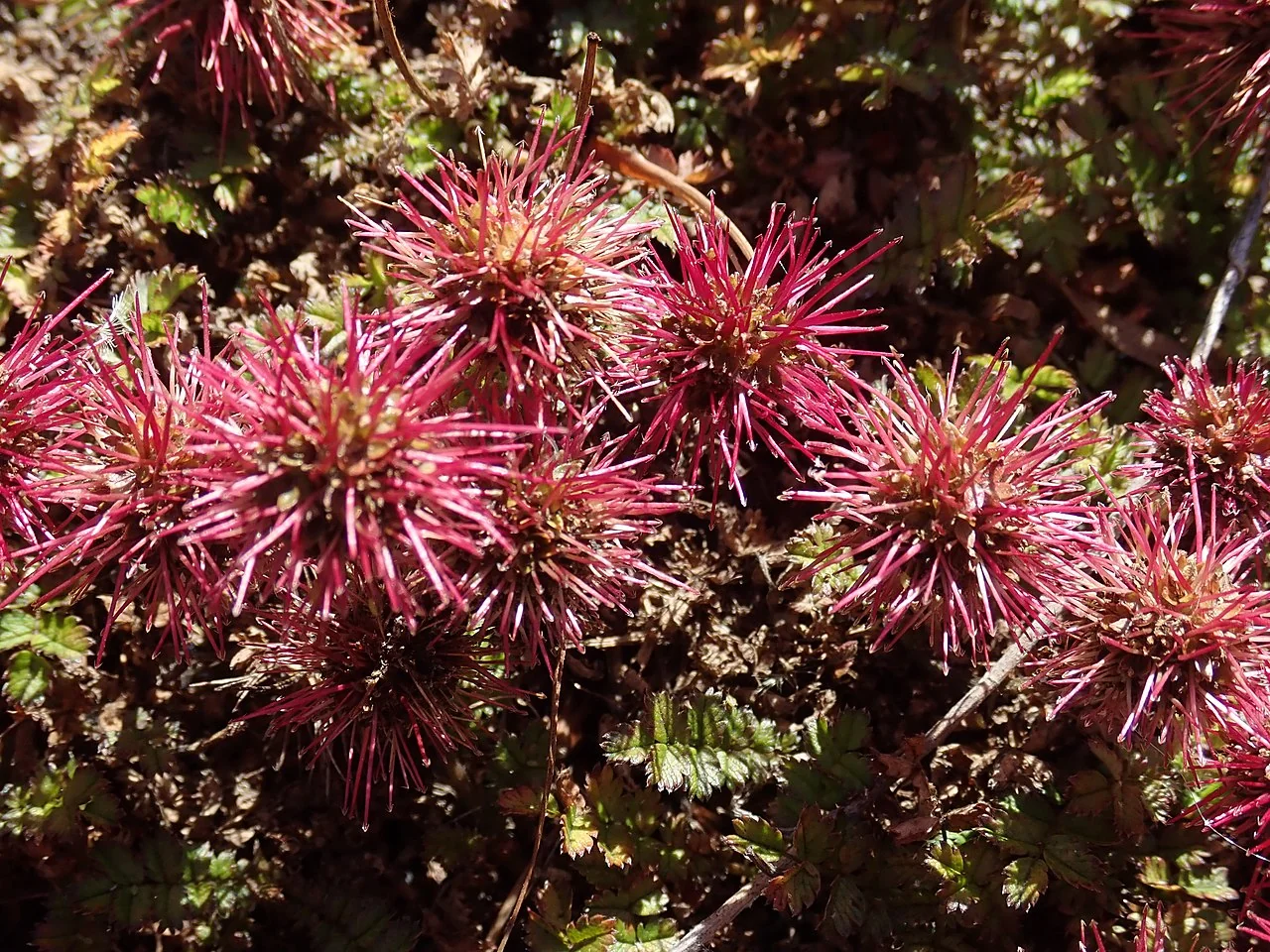
Small-Leaved Bidibidi
Acaena microphylla
Explore more NZ native plant guides in our index .
Introduction
Plant Overview
Small-leaved Bidibidi ( Acaena microphylla ) is a hardy native ground cover renowned for its characteristic reddish burrs and dense mat-forming growth habit. This resilient species features small, orbicular leaflets and produces distinctive spiny fruits that aid in seed dispersal. As a low-growing perennial, it excels in challenging growing conditions and serves as both an ornamental ground cover and an important component of New Zealand's native ecosystems.

Acaena microphylla , commonly known as Small-leaved Bidibidi or Piripiri, is a low-growing, mat-forming perennial native to New Zealand. It is characterized by its small, delicate, fern-like leaves and distinctive burrs that are covered in reddish spines. This plant is highly valued as a ground cover in gardens and is also an important component of native ecosystems, where it helps to stabilize soil and provides food for native birds. Its dense growth habit makes it an excellent choice for weed suppression and erosion control, particularly in rock gardens, gravel gardens, and on banks and slopes. The plant's unique burrs, while effective for seed dispersal, are also a notable feature, adding to its character.
Quick Facts
Plant Specifications
| Scientific Name | Acaena Microphylla |
|---|---|
| Height | 5-10 cm |
| Spread | up to 1 m |
| Water Needs | Low to moderate; prefers well-drained soil |
| Light | Full sun to partial shade |
| Frost Tolerance | High; tolerates frosts well |
| Salt Tolerance | Moderate |
| Growth Rate | Moderate to fast |
| Lifespan | Perennial |
Climate Best Suited to
Acaena microphylla is found throughout New Zealand in a variety of habitats, from coastal areas to subalpine regions. It is a hardy plant that can tolerate a wide range of climatic conditions, but it thrives in cool, moist environments with good drainage. It is particularly common in disturbed areas, such as roadsides and riverbeds.
Regional Suitability
| Whangārei | Ideal |
| Auckland | Ideal |
| Hamilton | Suitable |
| Rotorua | Suitable |
| Tauranga | Ideal |
| Gisborne | Ideal |
| New Plymouth | Ideal |
| Whanganui | Ideal |
| Palmerston North | Suitable |
| Napier | Ideal |
| Wellington | Ideal |
| Nelson | Ideal |
| Christchurch | Suitable |
| Dunedin | Suitable |
| Invercargill | Suitable |
| City | Climate Suitability |
|---|
Natural Habitat
Typical Environments
Understand the natural habitat of Scarlet Piripiri ( Acaena microphylla ), including its geographical distribution, preferred environmental conditions, and the types of ecosystems where it thrives. This knowledge is crucial for replicating its natural growing conditions in cultivation.
- Geographical distribution throughout New Zealand, from coastal areas to subalpine regions.
- Preferred cool, moist environments with good drainage, often found in disturbed areas like roadsides and riverbeds.
- Typical associated plant communities in various ecosystems, including open, rocky areas and grasslands.
Plant Conservation
Status and Management
Acaena microphylla has two main varieties. The microphylla variety is classified as "Not Threatened" in New Zealand. However, the pauciglochidiata variety has seen a decline in its conservation status, moving from "At Risk - Naturally Uncommon" in 2013 to "At Risk - Declining" by 2018 due to a reduction in its area of occupancy.
While native to New Zealand, some Acaena species are considered invasive in other countries. For example, Acaena microphylla is listed as an invasive non-native species in Northern Ireland, where its planting or spread in the wild is discouraged.
Growing Requirements
Soil Requirements
Well-drained soil is crucial for Acaena microphylla to prevent root rot. It can grow in most soil types, but performs best in sandy or loam soils that retain some moisture without becoming waterlogged. It tolerates acid, alkaline, and neutral pH levels.
Light Requirements
Acaena microphylla thrives in full sun to partial or dappled shade. Sunny spots encourage the most vibrant foliage colour, particularly the bronze hues.
Water Requirements
Water regularly during establishment. Once mature, it is drought-tolerant, but performs best with consistent moisture during prolonged dry spells. Water deeply but infrequently, allowing the soil to partially dry out between waterings. Always water from the root zone to avoid standing water.
Temperature and Humidity
Acaena microphylla prefers moderate temperatures and a temperate climate, thriving in environments with moderate humidity. It is hardy to 0°F or below (USDA Zones 7a-10b) and has a hardiness rating of H4 to H5 in the UK.
Planting Guide
-
When to Plant
The best time to plant Acaena microphylla is in autumn or early spring when soil temperatures are moderate and rainfall is more reliable, allowing the plant to establish its root system before extreme weather. If starting seeds indoors, plant them 14-20 weeks before transplanting outdoors, ideally after the last frost or in autumn.
-
Site Selection and Soil Preparation
Choose a location with excellent drainage, as the plant cannot tolerate waterlogged conditions. It thrives in full sun to partial or dappled shade, with sunny spots encouraging the best foliage colour. For heavy clay soils, incorporate coarse sand or fine gravel to a depth of 15-20 cm. For sandy soils, adding organic matter helps retain moisture and provides nutrients. It tolerates poor, shallow, and rocky soils as long as they are well-draining.
-
Planting and Spacing
Space plants 8 to 12 cm (3 to 5 inches) apart for quick ground cover. If planting seeds, surface sow them and gently press into the soil, keeping them consistently warm and moist for germination, which can take 4-12 weeks. For full ground cover, space plants approximately 50-70 cm apart.
-
Initial Care
Water regularly until established. Once mature, it is drought-tolerant, but performs best with consistent moisture during prolonged dry spells. Water deeply but infrequently, allowing the soil to partially dry out between waterings. Always water from the root zone to avoid standing water. Mulching can help retain soil moisture.
Ecological Role
Groundcover Functions
As a low, mat-forming native, Acaena microphylla plays several useful roles in open New Zealand landscapes. Its dense stoloniferous growth binds thin soils on banks, road edges and rocky ground, slowing surface runoff and helping to reduce erosion. The tight canopy the plant forms moderates soil temperature and moisture, creating small refuges for ground-dwelling invertebrates and facilitating the establishment of other native herbs. Flowers provide nectar and pollen for small insects, while the characteristic burrs are adapted for epizoochorous seed dispersal-readily attaching to feathers and fur so birds and mammals move seed between sites. In disturbed places it frequently acts as a pioneer species, rapidly covering bare ground and suppressing weeds, then persisting as part of later-successional grass-shrub mosaics.
Uses and Significance
Garden Uses
- Rock gardens
- Gravel gardens
- Banks and slopes
- Edging plant
- Between paving stones (tolerates foot traffic)
- Container plantings
- Ground cover for weed suppression and soil stabilization
Cultural Significance
Traditional Uses and Values
While not as extensively documented for traditional Māori uses as other native plants, Small-leaved Bidibidi ( Acaena microphylla ) was known for its distinctive burrs, which were sometimes used in traditional games and as a natural adhesive. Its presence in the landscape also served as an indicator of certain soil types and environmental conditions.
Landscaping Applications
Design Ideas
Discover how Scarlet Piripiri ( Acaena microphylla ) can be effectively integrated into various landscaping designs. This section offers creative ideas and practical advice for using this plant to enhance the beauty and functionality of your outdoor spaces, from residential gardens to public parks.
- Design ideas for rock gardens, gravel gardens, and alpine settings.
- Best uses as ground cover for weed suppression and soil stabilization.
- Combining with other native plants like Hebe, Corokia, and Coprosma for aesthetic appeal.
- Suitable for planting between paving stones due to its tolerance for foot traffic.
Seasonal Care Calendar
Spring
Spring is the ideal time for planting and dividing Acaena microphylla . New growth begins as temperatures warm, making it perfect for establishment and propagation activities.
- Ideal time for planting new specimens
- Divide established clumps for propagation
- Apply balanced fertilizer to support new growth
- Light pruning to remove any winter damage
- Monitor for new spread and control if necessary
Summer
Summer brings flowering and active growth for Small-leaved Bidibidi. Regular watering during dry spells and monitoring for excessive spread are the main care requirements.
- Greenish-white flowers appear on purple spikes
- Water regularly during hot, dry periods
- Monitor spread and trim back if needed
- Excellent time for taking cuttings
- Fruiting heads develop into characteristic burrs
Autumn
Autumn sees the formation of the distinctive reddish burrs and is another good time for propagation. The plant begins to slow its growth as temperatures cool.
- Characteristic reddish burrs mature and disperse seeds
- Second opportunity for division and transplanting
- Reduce watering as growth slows
- Collect seeds if propagation is desired
- General garden cleanup around plants
Winter
Winter is the dormant period for Acaena microphylla . Minimal care is required as the plant is extremely hardy and tolerates frost well.
- Dormant period with minimal growth
- Excellent frost tolerance requires no protection
- Water sparingly only if soil becomes very dry
- Plan spring planting and garden design
- Remove excessive burrs if causing problems
Pruning and Maintenance
Techniques and Timing
Acaena microphylla requires minimal pruning but benefits from regular maintenance to control its spreading habit and maintain garden aesthetics.
- Trim edges regularly to control spreading beyond desired areas
- Remove dead or damaged foliage in early spring
- Cut back old, woody growth to encourage fresh shoots
- Pull out newly rooted stems to prevent unwanted spread
- Deadhead spent flowers if seed dispersal is not wanted
- Light shearing maintains compact, dense growth
- Remove burrs before they disperse if controlling spread
Regular containment pruning is often the most important maintenance task, as this vigorous groundcover can quickly spread beyond its intended boundaries if left unchecked.
How to Grow Small-Leaved Bidibidi
Division
Division is the most reliable and preferred method for propagating Small-leaved Bidibidi. This mat-forming groundcover naturally spreads through creeping stems that root at nodes, making division both easy and highly successful. The best time for division is during spring or early autumn when the plant is actively growing but not under heat stress. Carefully lift sections of the established mat using a spade or garden fork, ensuring each division includes both healthy roots and growing shoots. Look for sections where the stems have naturally rooted into the soil, as these will establish most quickly. Separate the plant into smaller sections, each about 10-15cm across with well-developed root systems. Replant divisions immediately at the same depth as the parent plant, spacing them 40-50cm apart to allow for natural spreading. Water thoroughly after planting and maintain consistent moisture for the first 4-6 weeks until new growth indicates successful establishment. This method preserves the exact characteristics of the parent plant, including foliage colour and growth habit.
Seeds
Seed propagation of Small-leaved Bidibidi offers genetic diversity and is relatively straightforward once you understand the timing requirements. Collect seeds when the distinctive burr-like seed heads turn brown and dry, typically in late summer to early autumn. Wait until the seed heads are fully mature and easily detach from the plant. Cut the seed heads and place them in a paper bag, shaking gently to release the seeds. Store seeds in a cool, dry place where they remain viable for up to two years. Sow seeds either in autumn for natural winter stratification or in spring after the last frost, planting at a depth of 5mm in well-draining seed-raising mix. Maintain soil temperature between 10-15°C and keep consistently moist but not waterlogged. Germination is typically slow and irregular, taking 4-12 weeks depending on conditions. Seedlings should be grown on in pots until they develop several sets of true leaves and a robust root system before transplanting. While seed-grown plants may show slight variation from the parent, they generally maintain the characteristic bronze foliage and low-growing habit that makes this species so desirable.
Cuttings
Stem cuttings provide an effective propagation method for Small-leaved Bidibidi, particularly useful for expanding stock quickly or when division is not practical. Take cuttings during the active growing season in spring or early autumn when stems are healthy and growing vigorously. Select non-flowering shoots that are firm but not fully hardened, cutting 5-8cm lengths just below a node where roots will develop most readily. Remove the lower leaves to prevent rotting while retaining 2-3 pairs at the tip to maintain photosynthesis. Dip the cut end in rooting hormone powder to encourage faster root development, then insert cuttings into a well-draining propagation mix of equal parts peat moss and perlite. Place in a humid environment with bright, indirect light, avoiding direct sunlight which can stress the cuttings. Maintain temperatures around 18-20°C and keep the growing medium consistently moist but not saturated. Cover with a clear plastic dome or place in a propagation tray to maintain humidity levels. Roots typically develop within 6-10 weeks, after which cuttings can be gradually acclimatized to normal growing conditions. This method is particularly successful with the bronze-foliaged forms and maintains the parent plant's characteristics perfectly.
Pests and Diseases
Common Issues
Acaena microphylla is generally resilient to pests and diseases. However, it may be susceptible to root rot in poorly drained soils.
Did You Know-
Interesting Facts
The name Acaena comes from the Greek word 'akanthos', meaning 'thorn' or 'spine', a fitting description for the plant's famously spiky burrs. The species name, microphylla , means 'small-leaved'.
While the burrs of Acaena microphylla are a nuisance to hikers, they are a brilliant evolutionary adaptation for seed dispersal, attaching to anything that brushes past.
This plant is so effective at covering the ground that it is sometimes used as a lawn substitute in low-traffic areas, and has even received the prestigious Award of Garden Merit from the Royal Horticultural Society.


